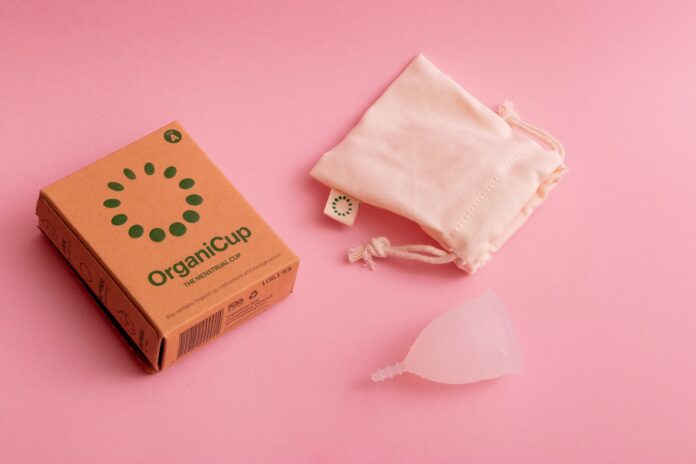By Katreena Sarmiento
When it comes to business, sustainability is inversely proportional to packaging: the better, more colourful, and more complicated your packaging is, the less sustainable it becomes. Sustainability decisions are no different from other packaging choices.
This post will give you sustainability strategies that start relatively simple and become increasingly complex, resulting in a more significant impact. Making the right choice for your business and customers begins with getting on the move now.
What is Sustainable Packaging
To appreciate the utility of sustainable product packaging, we need to understand its use and its value. Sustainable packaging can be defined as a product protection material that considers the impact on the environment and society.
The point of sustainability is to ensure the impact of the packaging throughout its life cycle does not endanger human health and harm the environment. It includes the packaging’s impact on energy use and greenhouse gas emissions, as well as on terrestrial and aquatic ecosystems.
Sustainable packaging also considers the packaging’s potential impact on biodiversity and the human, social, and economic well-being of communities. It shouldn’t also lend towards further depleting crucial resources on our planet. With that said, here are some sustainable packaging strategies you can try.
1. Use Less Packaging
Packaging is used for more than just protection. It helps enhance brand desirability, increases sales, contributes to product safety, and facilitates consumer use. However, much of the packaging we use is wasteful.
The amount of packaging can affect a product’s carbon footprint and energy use. While materials can be recycled or reused, this isn’t always the case. Some packaging, especially with specialised colours, becomes non-recyclable and ends up in a landfill. This adds unnecessary weight, takes up space, and contributes to greenhouse gas emissions.
One way to use less packaging is to reduce its material thickness, using thinner plastics and other packaging to reduce consumption in general. If you’re using multi-material packaging, usually paper and plastic, you can also reduce the types of packaging.
2. Use Recycled Packaging Materials
Another way to reduce packaging consumption is to use recycled packaging materials. There are different types of recycled packaging, each with its own benefits.
A good example is recycled polyethylene terephthalate (PET), which comes from used plastic soda bottles and other similar recycled materials. PET bottles are cleaned, melted down, and then re-formulated into new, high-density plastic packaging.
PET packaging is lightweight, tough, and reusable. It protects the contents effectively and can be reused multiple times. Its versatility makes it ideal for packaging various products, from food and electronics to beverages and cosmetics.
Recycled packaging materials include, but are not limited to, paper, cardboard, wood, plastic, and aluminium. These materials can be cost-effective, and in most cases, they are just as durable as new materials.
When considering recycled packaging materials, it is vital to consider the recyclability of each material. As with any packaging, certain recycled packaging materials can only be recycled in certain ways, and this varies by region.
3. Avoid Excessive Packaging Throughout The Supply Chain
When considering packaging, it is best to keep certain considerations in mind. These include the starting materials used for packaging, the materials used during the manufacturing process, and the materials used for packaging.
In the supply chain, the packaging is categorised into two types: Primary and secondary packaging.
Primary packaging is the packaging that comes directly from the manufacturer or distributor before it reaches the consumer.
On the other hand, secondary packaging is the packaging used once the contents have been unpacked. This includes shipping crates, cardboard boxes, and other similar materials.
It’s best to cut down on both primary and secondary packaging, especially packaging that uses plastics. Plastic wrapping costs a lot and gets immediately discarded once the product goes to the shelves. This is also the easiest way to cut down plastics within your supply chain.
Secondary packaging should consist of most, if not all, recycled and upcycled materials. This should help improve your sustainability efforts immediately without affecting your primary package.
4. Consider Sustainable Package Coating
Coatings are materials that can be applied to a surface to protect it from wear and tear, enhance its aesthetic value, or make it more functional. In many cases, coatings play a crucial role in packaging sustainability, and there are several benefits of using sustainable packaging coatings.
A coating’s sustainability level can be determined by the materials used in its formulation. These materials are usually derived from renewable resources, such as plants and timber. Other materials are from minerals and metals, which are recycled or reused, or even waste from different industries.
A coating’s environmental impact can also be determined by its manufacturing process. A coating’s manufacturing process involves various steps, such as mixing, coating, curing, and drying.
5. Use Local Manufacturing Partners
Every business has some type of supply chain, no matter how long it can be. A more efficient way towards sustainable packaging is to select vendors from your locale and raw material providers that come from within closer logistics areas.
Local manufacturers contribute to the local economy by creating jobs and buying locally-manufactured products. They often use materials sourced from local suppliers, minimising their transport footprint.
Local manufacturing also reduces greenhouse gas emissions. When materials are shipped long distances, they contribute to greater fossil fuel consumption. As the products don’t need to move far distances, they don’t need additional packaging protection going to your warehouses.
6. Build Disposal And Recycling Best Practices
Once you choose your packaging materials, you need to create a recycling and disposal policy. This should clearly state how your company will dispose of packaging materials.
When packaging materials are not recycled or reused, make sure to dispose of them safely. This includes storing them properly and disposing of them properly in designated facilities to be adequately reprocessed.
There are several options for your disposal and recycling needs. These include curbside recycling, drop-off centres at recycling facilities, and even specialised facilities that sort and reuse materials.
The Bottom Line
As sustainability becomes increasingly essential, packaging manufacturers have to look at new ways to preserve natural resources. As consumers, we can choose packaging materials that come from renewable resources, are recyclable, or incorporate other materials already used.
Sustainable packaging doesn’t have to be complicated. With just a few minor adjustments, you can improve the sustainability levels of your business. Follow these strategies, and you should be able to optimise how you can further help the environment.
Top Image: Source
About Katreena Sarmiento
 Kat is a Molecular Biology Scientist turned Growth Marketing Scientist. During her free time, she loves to write articles that will bring delight, empower women, and spark the business mind. She loves to bake but unfortunately, baking doesn’t love her back. She has many things in her arsenal and writing is one of her passion projects.
Kat is a Molecular Biology Scientist turned Growth Marketing Scientist. During her free time, she loves to write articles that will bring delight, empower women, and spark the business mind. She loves to bake but unfortunately, baking doesn’t love her back. She has many things in her arsenal and writing is one of her passion projects.











